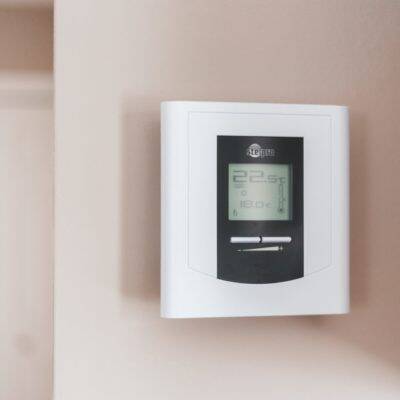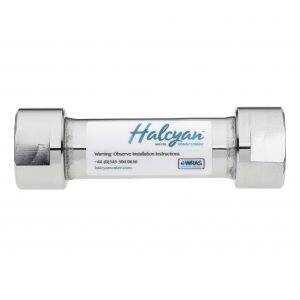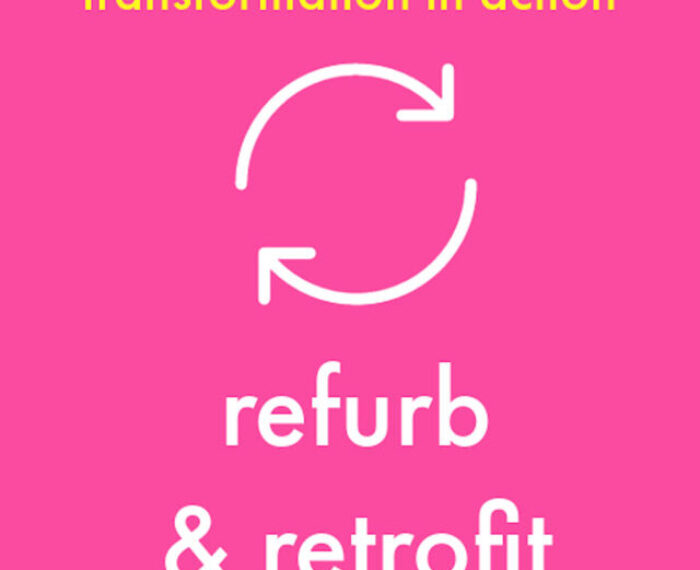With the price of energy going up and climate change at the centre of discourse there is no better time to look into how you can save energy and make your home more sustainable. In this article we’ll take you through our top 10 tips on how to save energy at home. These tips are all quick relatively inexpensive and most importantly will help you save on your energy bill while making your home that much greener.
1 – Improve the efficiency of your water heating
Hot water is a major contributor to your overall energy consumption, with 14% of a households energy being devoted to hot water. There are several easy ways to improve your energy efficiency where hot water is concerned. If you have an older hot water storage tank, a tank jacket can make a big difference in reducing lost heat. In the same vein insulating the ‘downpipes’ leading from the tank to your taps will also reduce heat loss.
Limescale is another efficiency killer, increasing your energy consumption by 7-10% for every 1mm of scale on a heating element. Treating your hard water and eliminating this issue is an straightforward and effective step to saving energy.

2 – Fit a water efficient showerhead
Continuing with the theme of hot water fitting an energy efficient showerhead is another quick and easy way of reducing your energy expenditure. This tip is applicable if you take your hot water directly from your boiler or hot water storage tank. A water efficient shower head will reduce the amount of hot water you us without removing the feeling of power from your shower. The energy saving trust estimate you can save as much as £30 a year by fitting a water efficient shower head.
3 – Adding Aerators
Another water related tip which operates under a similar principle to the water efficient shower heads is the fitting of aerators to taps. Tap aerators reduce the flow of water coming out of your taps without noticeably impacting the way the water feels. This again means less hot water used and more energy saved
4 – Draught proof your property
Unless your house is exceptionally designed and modern you will be losing heat to draughts, especially around doors and windows. Luckily this is one of the cheapest and most effective ways of reducing your home energy consumption. With proper draught proofing you could save approximately £25 a year on energy bills. Whilst you can get professional fitters to fix your draught problems for a reasonable price you can also do effective DIY fixes too!
5 – Use led lights
Light is can be a significant consumer of energy especially in the darker winter months. LED lights are far more energy efficient that heir conventional counterparts and can output enough light to compete. According to the Energy Saving Trust, if the average household replaced its bulbs with LED lights a saving of £30 a year on the energy bill is possible. Not only that but that equals a saving of 40kg of carbon a year as well!
6 – Smart Power Strips
Even if your electronics are switched off or in sleep mode, they can still use electricity. The term for this is a vampire load, where your devices use a small amount of energy whilst ‘off’. Though the amount of energy lost for an individual device is small add up the myriad of electronic devices around the house and this phenomenon can lead to a significant increase to your bill. A smart power strip allows you to shut off the power to these devices thereby eliminating the issue of vampire loads completely.
7 – Switch to more energy efficient appliances
If you’re still using an age-old washing machine or dishwasher then now is the time to look into replacing it. New appliances now have energy labels attached which will tell you how efficient they are from a scale of A – G. Whilst this may seem like a sizeable expense at first appliances with higher ratings can lead to significant savings in the long run. A tumble dryer at the highest scale of energy efficiency could save you up to £280 on your energy bills over its lifespan. If you apply this principle to all the energy hungry appliances in your home your savings will really begin to add up.
8 – Secondary glazing
Double glazing is a fantastic way to reduce heat loss, but it can be a very expensive project even in a property with few windows. However there is another option which can have a drastic impact on your energy costs without the level of expense associated with full double glazing. Secondary glazing is where you attach a secondary element to your existing frame giving the window greater insulating properties and reducing heat loss significantly. Simple systems can even be fit DIY cutting down cost further. If double glazing isn’t an option then secondary glazing is an excellent substitute.
9 – Smart Meter
It is hard to accurately reduce your energy expenditure if you don’t have an accurate understanding of how much energy you’re using. A smart meter means that you’ll be able to see exactly how much energy you use and where you can cut down. This means that you can intelligently reduce your usage and save money. In future smart meters will be able to inform you of when it is cheaper to use energy and you may even be paid to se energy at certain times such as when there is excess energy produced by wind farms.
10 – Heating Controls
Heating controls are an excellent and straightforward way to manage your energy use. A smart thermostat for example will allow you to manage exactly when your heating comes on and at what temperature. With this level of control you can prevent wasted energy heating your home beyond what is needed. There are several different types of heating control with some more sophisticated than others, depending on your situation one method will likely be more applicable than others. Regardless of what method you choose however a heating control is an excellent first step to reducing your energy bills.

Final Thoughts:
Hopefully these tips have given you some good ideas on how to save energy in your home and shown you that reducing your energy usage doesn’t have to break the bank! If you’d like to find out about how our system helps to deal with the hot water side of the energy equation please check out our system explanation linked below.




